Patient Transport 101: Understanding Intrahospital and Interhospital Transport
In the complex world of healthcare, efficient patient transport is crucial for providing high-quality care. When patients need to be moved within a hospital or transferred between different healthcare facilities, continuity of care and patient safety are crucial. Careful planning of intrahospital and interhospital transports have a vital role in better patient outcomes. In this blog, we will dive into the importance of intrahospital and interhospital patient transport, highlighting their challenges, best practices, and discuss some key elements for safe transport.
Why transport patients?
The decision to transfer a patient is made by considering the potential benefits compared to the associated risks. The primary goal of any intra- or inter-hospital patient transfers is to ensure the patient’s optimal health by transferring them to the nearest facility that can provide the required level of specialized care. Both the transferring and receiving facilities should prioritize the continuity of medical care for the patient. It is crucial to avoid hasty and poorly organized patient transfers, as they can increase the risk of morbidity and mortality.
The purpose of intrahospital and interhospital transports is to provide the patient with additional care that is not available at their current location. This additional care may involve transferring the patient to a diagnostic department, operating room, or specialized care unit within the same hospital, or it may require transferring the patient to another hospital altogether.
Intrahospital Patient Transport
Intrahospital patient transport refers to the movement of patients within a single healthcare facility.
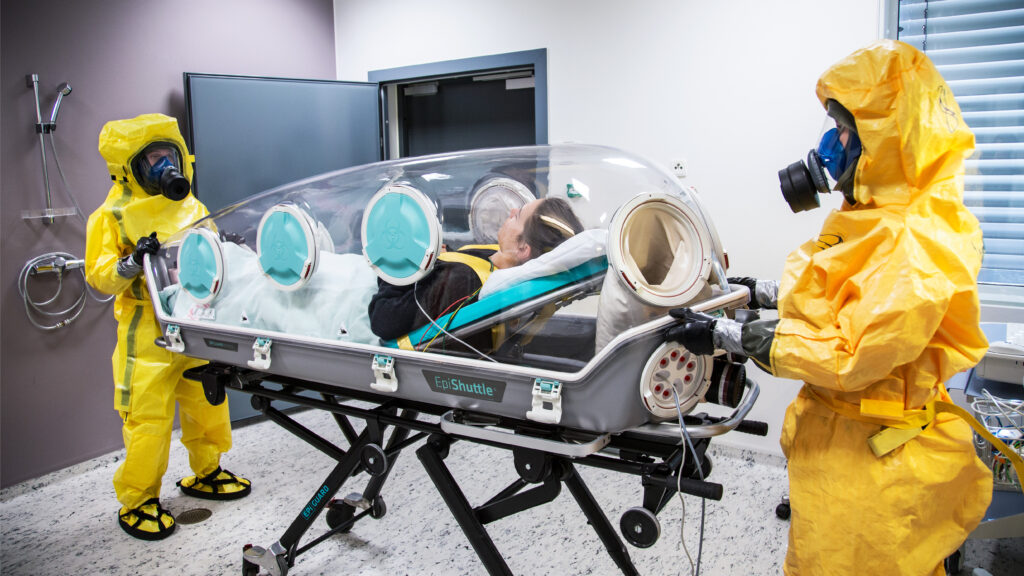
When is intrahospital transport needed?
Intrahospital transport is often required for patients who need diagnostic imaging and various medical procedures outside the Intensive Care Unit (ICU). These journeys involve transportation for magnetic resonance imaging (MRI), computed tomography (CT), nuclear medicine imaging, angiography, and gastrointestinal contrast studies.
Challenges, Risks and Best Practices
Intrahospital patient transport poses several challenges. One primary concern is patient safety. During transport, patients may be exposed to risks such as falls, adverse events, or interruptions in critical treatments. Intrahospital transport also poses significant risk for infections. Many patients are immunocompromised or vulnerable, requiring extra protection from the surrounding environment.
For instance, vulnerable patients like burn victims may be at risk of contracting infections during transportation. This is where isolation transportation units like the EpiShuttle play a vital role. The EpiShuttle provides essential safeguards for the patients by being completely sealed and creating a positive pressure environment which prevents contaminated outside air from entering the isolator to prevent infection.
Interhospital Patient Transport
Interhospital patient transport involves moving patients between different healthcare facilities.
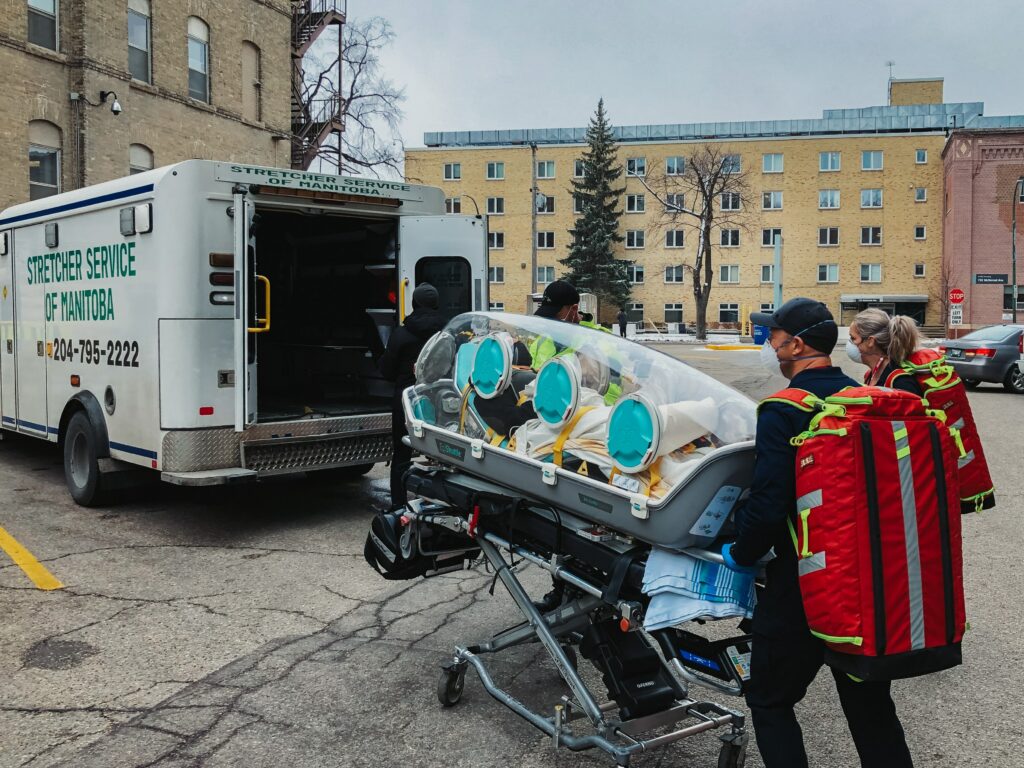
When is interhospital transport needed?
This type of transport is often required when patients require specialized treatments, consultations with specialists, or access to advanced medical technologies available only at specific institutions.
Challenges, Risks and Best Practices
Interhospital patient transport presents unique challenges due to the involvement of multiple healthcare organizations. Coordination between the sending and receiving facilities becomes crucial to ensure a smooth transition. Factors such as transportation logistics, transfer agreements, patient stability, and appropriate medical escort can significantly impact the success of interhospital transfers.
Existing data suggests that transferred patients experience worse outcomes, including longer length of stay, higher hospitalization costs, longer ICU time, and greater mortality. This demonstrates the significance of having established procedures, appropriate equipment such as the EpiShuttle, and skilled professionals in place.
Patients who often need to be transported to a specialized hospital are patients with infectious diseases, immunocompromised individuals, or burn patients. It is crucial to protect these patients from the external environment or vice versa. In such cases, patient isolation units like the EpiShuttle are vital in ensuring effective isolation and containment during transportation to prevent against infection.
Key Elements of Intrahospital and Interhospital Transport
Many key elements contribute to making a transport safe: decision to transport, pre-transfer stabilization and preparation, selecting the appropriate mode of transfer, accompanying personnel, required equipment and monitoring, and handover documentation at the receiving facility.
Decision to transport
The decision to transport a patient is a crucial one as transport involves additional risks and expenses for both the patient and the healthcare staff. Typically, a doctor makes this decision after thoroughly discussing the benefits and risks with the patient’s relatives.
Before the transport takes place, written and informed consent from the patient’s relatives, along with a clear reason for the transport is required.
Effective communication between the transferring and receiving facilities is essential, with complete information about the patient’s clinical condition, ongoing treatment, reasons for transport, mode of transport, and the timeline shared in a written document.
Pre-transport stabilisation and preparation
Before the transport, it is important to properly prepare and stabilise the patient to prevent any adverse events or deterioration in their clinical condition. This includes a meticulous assessment of the patient’s airway, breathing, circulation, and neurological status. A pre-transport checklist can be used to ensure that all necessary steps are taken.
Mode of transport
Patient transport can occur through ground transport or air transport.
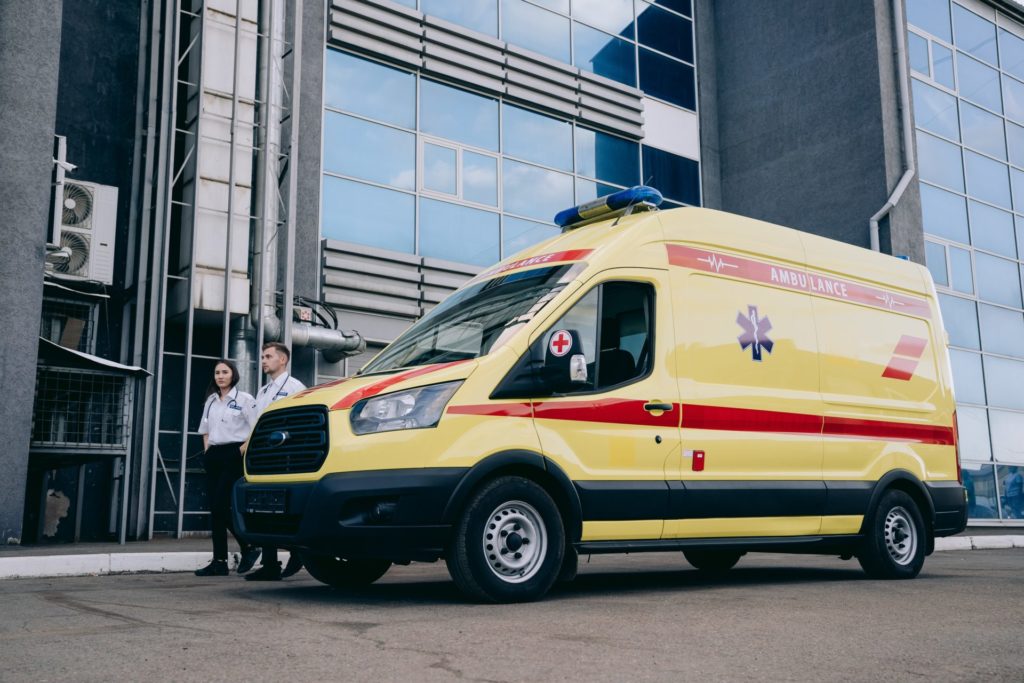
Ground transport
Different types of ambulances are used depending on the patient’s condition:
Basic life-support ambulance
These ambulances are equipped with appropriate staff and monitoring devices to transport patients with non-life-threatening conditions, providing basic life-support services.
Advanced life-support ambulance
These ambulances have staff trained to provide advanced life-support services, such as endotracheal intubation, cardiac monitoring, defibrillation, and administration of intravenous fluids or vasopressors. They are suitable for patients with life-threatening conditions.
Mobile Intensive Care Unit (MICU)
These specialized vehicles are equipped with all the necessary equipment and staff to transfer critically ill patients. They are typically used in conjunction with specialist retrieval teams in developed countries.
Air transport
Air transport has gained popularity in developed countries due to its advantages of rapid transport and specialized medical care. It has been particularly beneficial for patients with major trauma, acute myocardial infarction, and acute stroke, as it enables medical care in a timely manner.
Air transport is mainly performed by specialized air ambulances. Air ambulances play a vital role in medical transport. They can provide rapid transport to care, improve access to care, and shorten transport times.
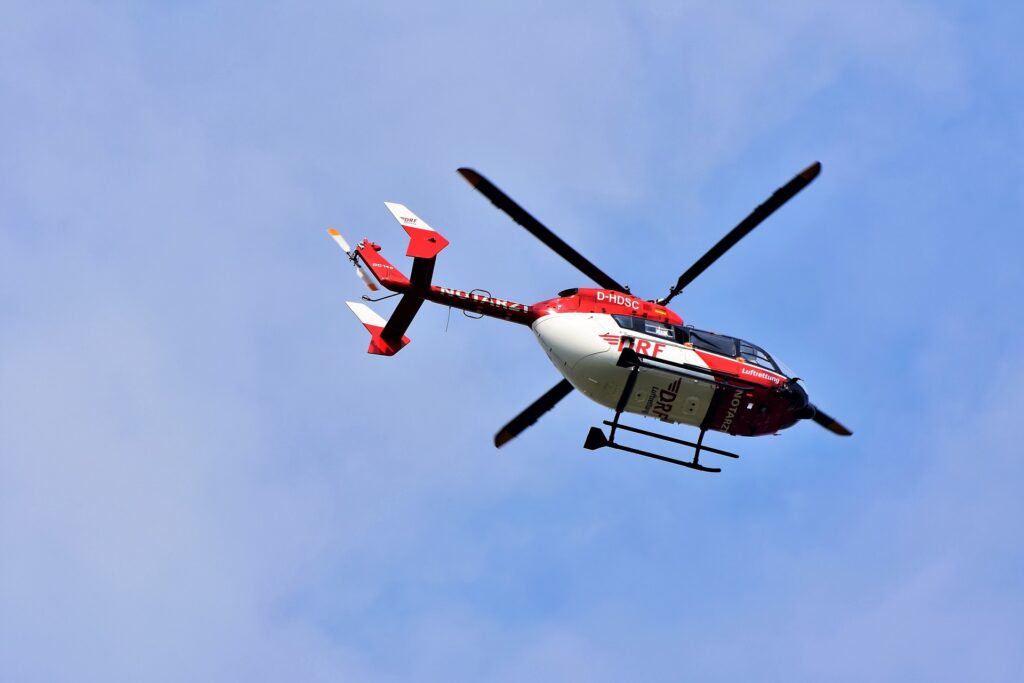
Accompanying the patient
It is recommended to have at least two competent personnel accompany the patient during the transport. The level of care required by each patient determines the qualifications of the accompanying personnel. Patients are categorized into different levels of critical care dependency (level 0,1,2,3).
Equipment, drugs, and monitoring
Proper monitoring and the provision of life-saving drugs are essential for the transport of patients. The transfer ambulance must be equipped with all the necessary drugs and instruments required for airway management, oxygenation, ventilation, hemodynamic monitoring, and resuscitation. All monitoring equipment needs to be established before the transport, and infusion drugs should be initiated. The EpiShuttle is only patient isolation unit on market that enables critical care to be performed during transport.
The person in charge of patient transport should ensure an adequate supply of these emergency drugs. The minimum standard of monitoring recommended includes continuous electrocardiogram monitoring, non-invasive blood pressure monitoring, oxygen saturation monitoring, end-tidal carbon dioxide measurement (in ventilated patients), and temperature monitoring.
All monitoring equipment should be properly secured and placed at or below the level of the patient to ensure uninterrupted monitoring. Patients on ventilators must be transferred using portable transport ventilators.
Handover documentation
Proper documentation is important throughout the transport process. Documentation should be clear and comprehensive at all stages of the transport. It serves as the only legal document confirming the patient’s transfer and should include details about the patient’s condition, reason for transport, names and designations of referring and receiving clinicians, vital signs before the transport, clinical events during the transport, and the treatment provided. The use of standardized documentation is recommended for both intrahospital and interhospital transport.
Conclusion
Intrahospital and interhospital patient transport play a crucial role, ensuring continuity of care and access to specialized treatments. While both types of transports present unique challenges, the EpiShuttle along with standardized protocols, training and effective communication helps overcome them by enhancing patient care and safety.
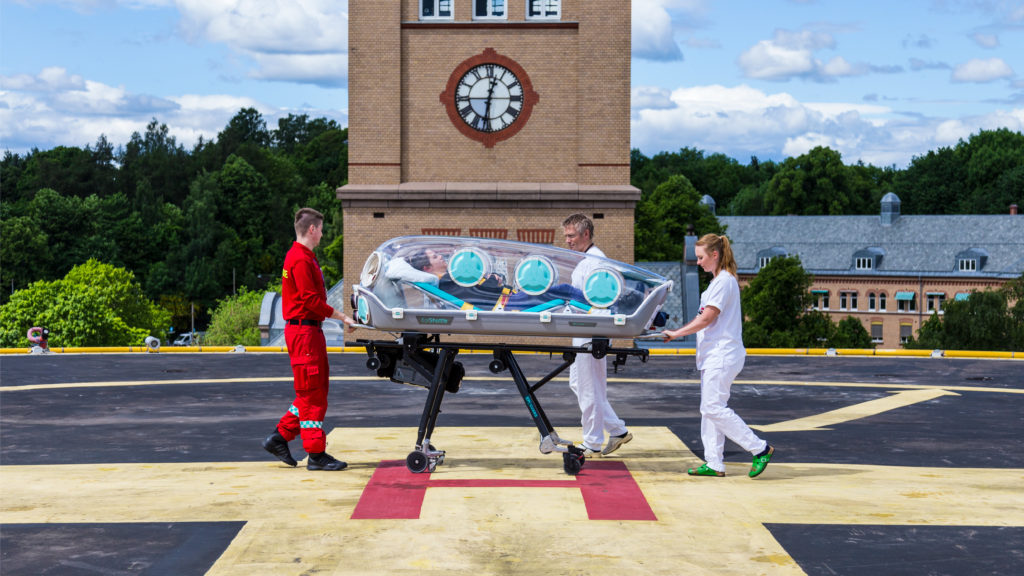
REFERENCES
- Iwashyna, T. J. (2012). The incomplete infrastructure for Interhospital Patient Transfer. Critical Care Medicine, 40(8), 2470–2478. https://doi.org/10.1097/ccm.0b013e318254516f
- Jarden, R. J., & Quirke, S. (2010). Improving safety and documentation in intrahospital transport: Development of an intrahospital transport tool for critically ill patients. Intensive and Critical Care Nursing, 26(2), 101–107. https://doi.org/10.1016/j.iccn.2009.12.007
- Joosse, P., Saltzherr, T.-P., van Lieshout, W. A., van Exter, P., Ponsen, K.-J., Vandertop, W. P., & Goslings, J. C. (2012). Impact of secondary transfer on patients with severe traumatic brain injury. Journal of Trauma and Acute Care Surgery, 72(2), 487–490. https://doi.org/10.1097/ta.0b013e318226ed59
- Kulshrestha, A., & Singh, J. (2016). Inter-hospital and intra-hospital patient transfer: Recent concepts. Indian Journal of Anaesthesia, 60(7), 451. https://doi.org/10.4103/0019-5049.186012
- Mueller, S. K., Fiskio, J., & Schnipper, J. (2019). Interhospital transfer: Transfer processes and patient outcomes. Journal of Hospital Medicine, 14(8), 486–491. https://doi.org/10.12788/jhm.3192
- Stawicki, S., Knight, P., Maheshwari, N., Hussain, J., Scholl, M., Hughes, M., Papadimos, T., Guo, W., Cipolla, J., & Latchana, N. (2015). Complications during intrahospital transport of critically ill patients: Focus on risk identification and prevention. International Journal of Critical Illness and Injury Science, 5(4), 256. https://doi.org/10.4103/2229-5151.170840
- Warren, J., Fromm, R. E., Orr, R. A., Rotello, L. C., & Horst, H. M. (2004). Guidelines for the inter- and intrahospital transport of critically ill patients*. Critical Care Medicine, 32(1), 256–262. https://doi.org/10.1097/01.ccm.0000104917.39204.0a